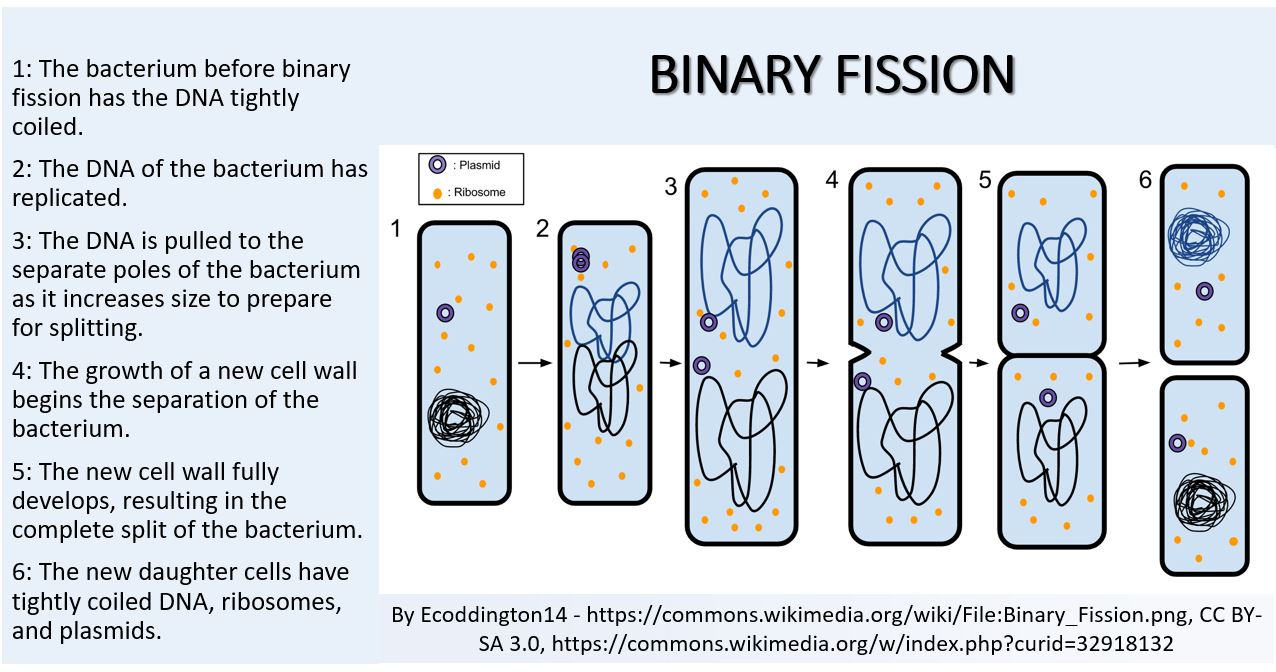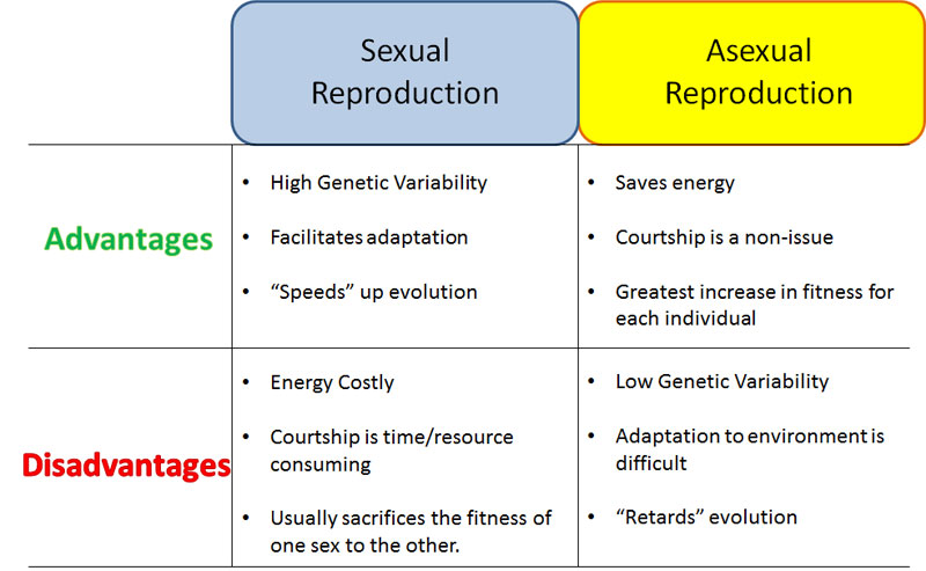

For example, Mycobacterium tuberculosis, the causative agent of tuberculosis, has a generation time of between 15 and 20 hours. Whereas Escherichia coli can double in as little as 20 minutes under optimal growth conditions in the laboratory, bacteria of the same species may need several days to double in especially harsh environments. Bacterial doubling times vary enormously. In prokaryotes (Bacteria and Archaea), the generation time is also called the doubling time and is defined as the time it takes for the population to double through one round of binary fission. This definition is not practical for bacteria, which may reproduce rapidly or remain dormant for thousands of years. For example, the typical generation time for the human population is 25 years. In eukaryotic organisms, the generation time is the time between the same points of the life cycle in two successive generations.

The Z ring pinches the cell envelope to separate the cytoplasm of the new cells. (credit a: modification of work by Centers for Disease Control and Prevention) Figure 9.3 FtsZ proteins assemble to form a Z ring that is anchored to the plasma membrane. Two daughter cells of similar size form and separate, each receiving a copy of the original chromosome. A division septum forms in the center of the cell.

(b) Binary fission in bacteria starts with the replication of DNA as the cell elongates. Figure 9.2 (a) The electron micrograph depicts two cells of Salmonella typhimurium after a binary fission event. For example, we know that specific enzymes break bonds between the monomers in peptidoglycans and allow addition of new subunits along the division septum. The daughter cells are separated by the division septum, where all of the cells’ outer layers (the cell wall and outer membranes, if present) must be remodeled to complete division. The divisome activates to produce a peptidoglycan cell wall and build a septum that divides the two daughter cells. Additional proteins required for cell division are added to the Z ring to form a structure called the divisome. The Z ring is anchored by FtsZ-binding proteins and defines the division plane between the two daughter cells. FtsZ assembles into a Z ring on the cytoplasmic membrane ( Figure 9.3). This process of cytokinesis and cell division is directed by a protein called FtsZ. The center of the enlarged cell constricts until two daughter cells are formed, each offspring receiving a complete copy of the parental genome and a division of the cytoplasm (cytokinesis). Replication continues in opposite directions along the chromosome until the terminus is reached. Next, the replication of DNA starts at a location on the circular chromosome called the origin of replication, where the chromosome is attached to the inner cell membrane. Before dividing, the cell grows and increases its number of cellular components. The most common mechanism of cell replication in bacteria is a process called binary fission, which is depicted in Figure 9.2. For example, Borrelia burgdorferi, the causative agent of Lyme disease, has a linear chromosome. Most bacteria have a single circular chromosome however, some exceptions exist. In prokaryotes, reproduction is always asexual, although extensive genetic recombination in the form of horizontal gene transfer takes place, as will be explored in a different chapter. The bacterial cell cycle involves the formation of new cells through the replication of DNA and partitioning of cellular components into two daughter cells. Describe quorum sensing and its role in cell-to-cell communication and coordination of cellular activities.Identify health risks associated with biofilms and how they are addressed.Describe the formation and characteristics of biofilms.Describe examples of cell division not involving binary fission, such as budding or fragmentation.Explain several laboratory methods used to determine viable and total cell counts in populations undergoing exponential growth.Identify and describe the activities of microorganisms undergoing typical phases of binary fission (simple cell division) in a growth curve.Define the generation time for growth based on binary fission.


 0 kommentar(er)
0 kommentar(er)
